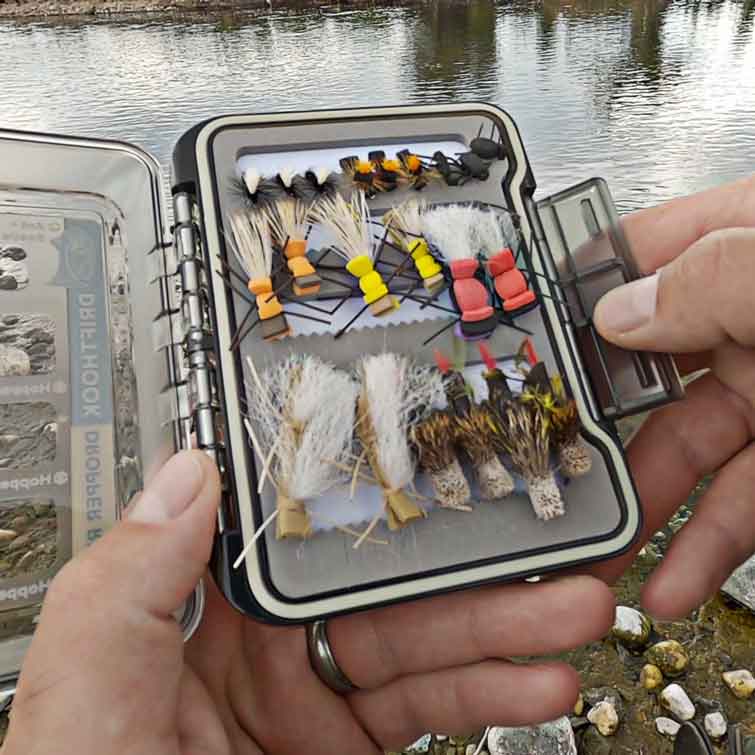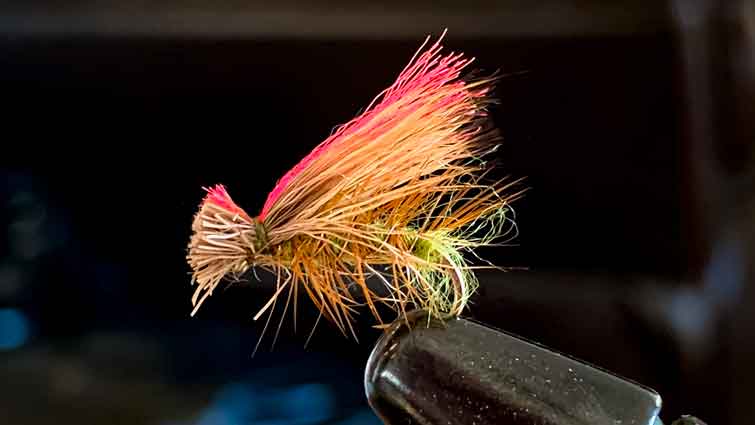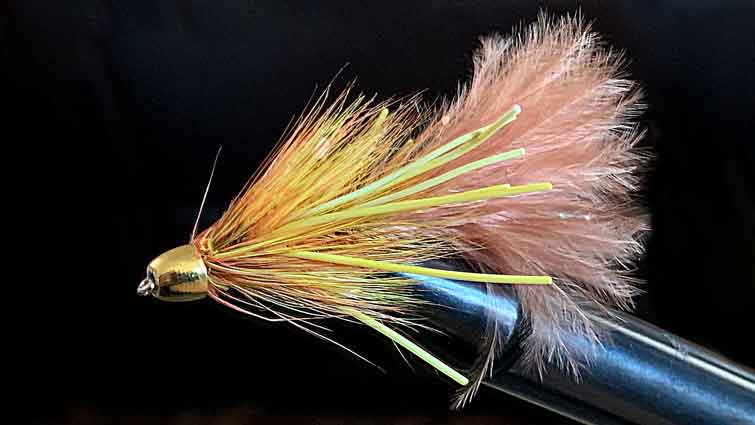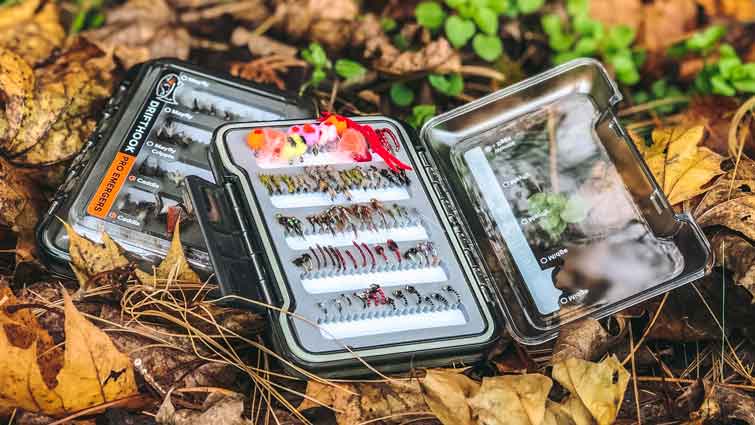Fly fishing flies can be divided into three price categories. The price of flies varies depending on the materials used, the type/class of fly, and how much work goes into making them.
On average, fly fishing flies may cost anywhere from $2 to $3. However, certain varieties cost much more. Flies may be purchased for as little as a dollar or less, although the quality is often less desirable, and they are not as long-lasting as the higher-priced flies.

In this article, we'll look at the cost of flies, their materials, and the cost of production. Additionally, we'll look at the overall expense of flies post-production.
How Much Do Fly Fishing Fly Materials Cost?
Materials used in fly fishing flies can vary greatly. The quality of these materials will affect how long your flies last, how they look on the water, and whether or not fish are attracted to them. Some types of materials typically used for fly fishing include:
Feathers: feathers from various birds like pheasant, hen turkey, mallard duck, goose, and others.

Synthetic fibers: often, synthetic fibers are used instead of natural feathers. Common artificial substitutes include Chenille, Nylon, Dubbing and Wire. Synthetic materials tend to be less expensive but mimic the look of real bird feathers.

Hair: hair from animals like elk, deer, rabbits, or other game can be used on fly fishing flies depending on what your target species is. Some game fish prefer specific types of prey, so you'll want to research what types of aquatic life they commonly feed on in the area you plan to fish before choosing which type/class of fly you want to purchase.

Thread: thread made from nylon or silk are frequently used as a tying material, allowing for different techniques that may aid in catching more fish.

Shanks: thread wrapped around a metal object used to provide weight.
The cost of fly fishing flies varies depending on the materials used in creating the hook and how much work goes into making them. For example, some manufacturers use specific feathers (e.g., hen turkey) while others will use more common feathers like goose or pheasant to make their patterns.

This difference can be seen in the price of these products on average. Professional-grade materials are more expensive than generic. Fly shops may sell flies made from generic material due to the limited availability of materials needed for production.
The price of fly fishing flies may also vary based on the rarity of materials. For example, certain pheasant feathers are very hard to find in fly shops because of the dwindling population of pheasants in North America.
What are the Most Common Materials Used for Flies?
Commonly used materials for flies include marabou, peacock herl, pheasant tail fibers, bucktail, and flash wool. Each of these materials serves a certain purpose in creating the fly.
Game bird skins, such as grouse, partridge, pheasant, peacock, and chickens, are among the most popular natural materials utilized in fly tying. Rabbit hair and deer hair are also frequent ingredients in a variety of fly patterns.

Additionally, materials like marabou, peacock herl, and bucktails are used to imitate insects when tying flies.
- Marabou is commonly used to imitate water-dwelling organisms like crayfish or dragonfly nymphs.
- Peacock herl is often found on the back of freshwater patterns that are meant to resemble baitfish or leeches.
- Bucktails are used for streamers; burrs give them an added texture that makes them more effective at imitating small fish like sculpins.
- Flies made with flash wool look like bugs like grasshoppers and stoneflies (an aquatic insect).
Flies can be tied out of just about any material, but these are less common and generally used only in specific situations. Fly tiers are constantly changing up materials and presentations to make the newest "hot fly" to attract new buyers.

Elk’s hair is an excellent substitute for traditional hackle or saddle hackle, which can have a tendency to be too stiff or slough off after being wet. For instance, elk hair can be used on a stonefly pattern with a palmer hackle.
Sheep's wool is sometimes still used on dry flies because it absorbs the water that would otherwise sit on top of the pattern and pull it down into the water. This keeps the fly from sinking but still looks realistically soggy once it starts to drift downstream.
How Much Does It Cost to Produce Flies?
The cost of fly fishing flies can also be significantly impacted by how much work goes into creating them. For example, some manufacturers will cut out a single feather from a bird and use household thread to tie it onto their hook, while others use ten steps or more for each individual fly, depending on what type/class they're going for.
To produce a fly, manufacturers need to purchase materials like feathers, thread, beads, and other items, which can easily cost up to $1+ per fly. If you include labor costs and shipping, flies can cost a manufacturer over $2 to produce.
The price of single flies can vary greatly depending on how specific your fly fishing needs are. If you are fly fishing for tarpon, your pattern will have significantly more material then if you are nymphing a tailwater for trout.

Is It Cheaper to Make Your Own Flies?
You will need to spend quite a bit of time learning how to tie these flies yourself. In addition to time and patience, you'll need to purchase materials. If you're just entering the fly fishing world, expect to spend at least $75 on tying materials alone.
Buying materials and tying your own flies may be cheaper if you're making a high volume of flies. Fly kits and individual flies are the better buys for the average fly fisherman, especially those without the time to learn multiple tying methods.

What is the Cost of Fly Fishing Fly Kits?
Fly fishing flies can be bought in a variety of ways. Many fly fishermen (and women) like to tie their own flies and may purchase the materials needed for this rather than buying complete fly kits. Others choose to purchase pre-made fly kits, which come with all the materials and instructions necessary to create a specific type of fly.
Entry-level fly fishing kits can cost you between $50 and $300. For one simple streamer, it might take $1 worth of material; for more complicated patterns, it might take $4+ worth of materials.
The cost of pre-made flies varies dramatically depending on what type of fish you want to catch and where you are going fly fishing. For example, if you are looking for trout flies that work great in high mountain lakes, expect to pay about $2-$4 per fly at most places.
What Types of Fly Kits are Available?
There are a variety of fly kits available that contain multiple different flies. Of course, there are basic kits that will typically include around 12-20 patterns, but others go above and beyond with boxes containing over 100 different types of flies.
Nymph, Emerger, Dry Fly and Streamer kits, among others, are available on the market in quantities of 25 flies, up to 120 or more. These kits can cost $30 to $100+, depending on the type of pattern you're looking for.
These fly fishing flies kits often include different flies that are of different colors to accommodate different water types and conditions. Some include flies that resemble specific insects, while others include patterns of fish predators.

The Final Cost of Flies Post-Production
Most flies will end up costing customers between $2 and $3 after all is said and done, but for any individual fly, the cost can range from as little as a dollar to as much as five dollars.
The price of a single fly will depend on several factors, including what type of feathers are used in construction, the rarity or availability of certain types of feathers, and how complicated it is to put the fly together.
The good news is that fishing companies will often offer discounts when you buy in bulk (e.g., instead of purchasing flies at $3 each, buying two packages of 6 will likely bring the price down). The random assortment can also be made up of flies created by different manufacturers.

Whether you're looking into purchasing a fly kit that contains pre-made flies or purchasing the materials and putting them together yourself, one thing is for certain: fly fishing can be an expensive hobby. However, it's clear to see that the costs of acquiring a new collection of flies for your favorite fishing spot is well worth it.
The Cost of Different Types of Flies
Different fly patterns use different materials. Some materials, like chenille and foam, are cheap to buy. Other materials like deer hair and marabou feathers take a lot of skill to be able to use effectively (and therefore cost more). The only way you can really know how much flies cost is if you're aware of all the fly patterns you might need for different occasions.

The Cost of Dry Flies
The cheapest fly fishing flies are called "dries" because they are only meant to float on the water's surface for a short amount of time to fool nearby fish into thinking that it is an insect. These types of dry flies only cost pennies to make.
Dry fly bodies are constructed of various threads, feathers, fur, and synthetic materials, whereas wet fly bodies are typically made of natural materials.
Most entry-level dry flies cost between $1 to $3 each. While they're not as impressive looking as some of the more advanced patterns, if you plan on fishing for trout or bluegill, most standard patterns will help you catch fish.

The Cost of Streamers
The next fly fishing flies are "streamers," which are larger patterns attached to sinking lines intended to mimic minnows or baitfish swimming in fast-moving currents.
The most expensive flies are called "streamers” because they look like a minnow or baitfish swimming through the water. They are meant to be used when stream fishing to attract fish that are feeding on small fish, which are feeding on an insect's larvae at the bottom of the river or lake. Streamers cost anywhere between $2-3 each, on average.
Because they take up more space on your line, streamers require a heavier weight than other types of flies. These rigs use sink tips or special sinking leaders so they can be cast far enough away from you to give you control over where they land when you make the cast.

The Cost of Wet Flies & Nymphs
The cost of wet flies, which are very similar to nymphs, is usually between $2-4 each. They are designed to look like minnows, but instead of floating on the surface, they sink beneath it.
The materials used to make wet flies include a hook, a weighted body, and sometimes even an attractor pattern. Wet, or nymph flies that sink beneath the water's surface but are still designed to look like baitfish or minnows. They are more expensive than dry flies because they take longer to make, use extra feathers or fur, and sometimes even gold or silver thread.
Nymphs are used as lures for trout and panfish like bluegills. They are meant to be cast under the water's surface to catch fish. Nymph flies cost between $1 to $3 dollar each, depending on the type of materials used.
Wet flies are used when fishing for trout or panfish in moving water where nymphs can't be cast as far away from you because of the current. To make sure that your wet fly sinks below the surface instead of floating on top, it's best to use a weight about three times bigger than what you'd typically use with a dry fly.

Conclusion
Fly fishing flies are a vital part of fly fishing, and the price can vary depending on what type you need. Prices for these tools may range from $2 to $3 per fly, but some varieties cost much more than others.
There are cheap or poorly made flies that typically run around a dollar or less to get started with this hobby. However, if you want quality materials and attractive designs, then expect to spend anywhere from 2-10 dollars per fly at minimum.
Matthew Bernhardt, a third-generation Coloradan, grew up at the forefront of the state’s fly-fishing revolution, enjoying time on the water, side by side with experienced guides and lifelong anglers.
By combining his passion for fly-fishing with input from other experienced fly-fishers and guides and his fine arts degree from Colorado State University, Matthew spent five years carefully developing the Drifthook Fly Fishing System, built to help every angler catch more trout.
When he’s not spending time with his wonderful family, you’ll find him out on the water catching MONSTER trout, and he anxiously looks forward to the day when his kids are old enough to join him there.





